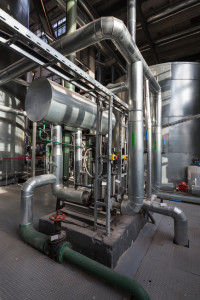Industrial processes make large employ of a particular kind of pumps called liquid-ring pumps, a mechanical device allowing to obtain vacuum or significantly compressed-gas chambers.
These pumps offer high performances and efficiency, but using rotating mechanical parts they generate an amount of thermal energy, dissipated in the liquid-ring increasing the fluid’s temperature. In order to keep the pump working efficiently, the water employed in the liquid-ring pump to create the vacuum requires a proper temperature control.

Liquid cooling in a liquid-ring pump is achieved with heat exchangers, usually fed with cooling water.
Plate heat exchangers in this application allow to reduce assemblies sizes, achieving an excellent thermal efficiency, keeping the liquid-ring at the suitable temperature by using water at medium-low temperature, meaning that the cooling can be achieved by employing water provided by cooling towers or dry coolers.
A couple of topics must be addressed during the engineering of heat exchangers for liquid-ring pumps applications:
– low flow rate drops
– kind of industry of application
The first point is important to avoid pump’s overload, and the second one because of industries and processes with the presence of dirt, both in working fluids and environment. In this case, anti-clog heat exchangers must be preferred making easier cleaning and maintenance activities.
